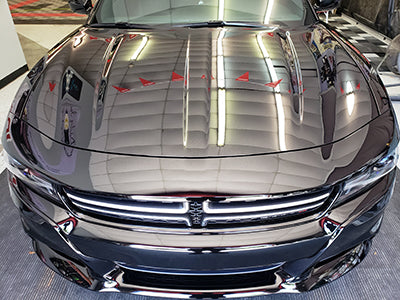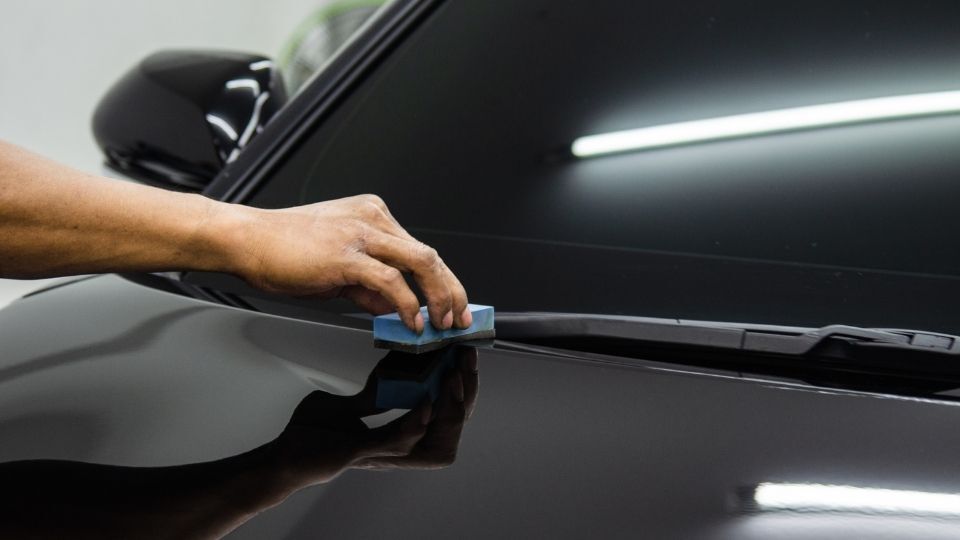Is Ceramic Coating Worth the Investment for Your Car’s Exterior?
Is Ceramic Coating Worth the Investment for Your Car’s Exterior?
Blog Article
Ceramic Covering vs. Traditional Wax: Which Offers Much Better Long-Term Security?
The discussion between ceramic layers and traditional wax for automobile security has actually garnered significant focus among vehicle fanatics and specialists alike. Ceramic finishes boast superior durability and resistance to ecological elements, yet the intricacy of their application increases questions concerning availability and practicality.
Introduction of Ceramic Finish
Ceramic covering has obtained significant popularity among automobile lovers and detailers alike due to its advanced protective qualities. This ingenious innovation is developed to develop a durable, hydrophobic guard over a car's paint surface area, substantially improving its resistance to environmental pollutants such as dirt, UV rays, and chemical spots. Unlike traditional wax, which offers a short-term layer of security, ceramic finishes bond at a molecular level with the paint, providing lasting sturdiness-- frequently expanding past 2 years with correct maintenance.
The application process entails thorough preparation of the vehicle's surface, consisting of cleaning and brightening to make certain optimum bond. Once applied, the covering treatments to create a durable layer that not only adds depth and gloss to the paint however additionally simplifies maintenance. With its hydrophobic homes, ceramic finishing allows water and dust to glide off even more easily, minimizing the frequency of washes and lessening the danger of swirl marks.
In addition, ceramic coverings are readily available in various formulations, enabling customers to pick items customized to their certain requirements and preferences. Generally, ceramic coating represents a significant development in paint defense technology, delivering exceptional efficiency contrasted to conventional alternatives.
Review of Traditional Wax
Commonly related to as a staple in automobile care, wax works as a preferred option for those seeking an uncomplicated approach to enhance and secure their automobile's paint - ceramic coating. Automotive wax generally makes up all-natural active ingredients, such as carnauba, or artificial compounds, designed to develop a safety layer on the surface area of the paint. This layer not just boosts the lorry's gloss and beam but also offers an obstacle against environmental impurities
The application of wax is normally easy to use, making it accessible for both specialists and do it yourself fanatics. It can be applied by hand or device, permitting adaptability in the outlining process. As soon as applied, wax needs a curing period, after which it sets to form a safety covering. Wax is also understood for its ability to push back water, promoting a beading impact that assists in the prevention of water areas and deterioration.
However, while wax is reliable for enhancing the aesthetic charm of a lorry, it is very important to note that the security it supplies might necessitate a lot more constant reapplication compared to alternative items, such as ceramic finishings. On the whole, traditional wax remains a favored choice for those focusing on convenience of usage and prompt aesthetic improvement.
Toughness and Long Life Contrast
While both ceramic finishes and traditional wax offer protective benefits for automotive paint, their sturdiness and durability differ substantially. Typical wax, commonly made from all-natural carnauba or artificial polymers, usually gives a safety layer that lasts around 3 to six months. This fairly short life expectancy requires routine reapplication to preserve ideal security.
In comparison, ceramic layers are engineered from innovative nanotechnology, developing a covalent bond with the paint surface area. This results in a durable, hydrophobic layer that can endure for 2 to 5 years, relying on the product and ecological problems. The premium durability of ceramic coverings is associated to their chemical structure, which offers boosted resistance to scrapes, UV rays, and oxidation.

Defense Against Ecological Factors
Securing a vehicle's paint from ecological factors is crucial for preserving its look and value gradually. Vehicles are continuously subjected to a variety of aspects, including UV rays, bird droppings, tree sap, acid rainfall, and road gunk, every one of which can jeopardize the honesty of the paintwork.
Ceramic finishes give a robust defense versus these ecological assailants. Unlike standard wax, which can weaken quickly under UV exposure, ceramic finishes form a resilient, hydrophobic layer that withstands the unsafe effects of sunlight and environmental contaminants. This innovative technology creates a chemical bond with the automobile's surface area, supplying superior protection that lasts for several years, also in severe conditions.
In contrast, ceramic coatings preserve their protective top qualities much longer, significantly lowering the risk of paint damage and making sure that the car keeps its aesthetic allure. As a result, ceramic coatings are progressively recognized as the superior selection for long-lasting protection this versus environmental factors.
Application and Upkeep Differences
The methods of application and succeeding maintenance for ceramic layers and conventional wax differ dramatically, affecting the total individual experience and effectiveness of each product. Ceramic layers require an even more detailed application process, commonly involving surface prep work that consists of washing, decontaminating, and brightening the vehicle. When the surface area prepares, the ceramic finishing is used in a controlled atmosphere, commonly needing professional expertise to make sure proper treating and bonding to the paint.

While both products enhance car look, the longer-lasting defense supplied by ceramic coverings may warrant their first investment, in spite of the even more requiring application process. On the other hand, typical wax stays a preferred option for those looking for an easier, albeit temporary, option.

Verdict
In final thought, ceramic coverings show substantial advantages over standard wax in terms of sturdiness and environmental management. With a lifespan expanding two to five years and exceptional resistance to UV rays, dirt, and chemical stains, ceramic coverings supply a much more effective option for long-term car upkeep. Although the application procedure may call for professional expertise, the resulting price financial savings and minimized regularity of reapplication underscore the worth of ceramic coatings for those seeking optimal car protection.
The argument between ceramic layers and traditional wax for automobile protection has actually amassed significant interest amongst automobile fanatics and specialists alike. Unlike conventional wax, which gives a short-term layer of security, ceramic coverings bond at a molecular level with the paint, offering resilient sturdiness-- frequently prolonging past two look at this website years with proper maintenance.
While both ceramic coatings and traditional wax offer protective benefits for automobile paint, their longevity and longevity vary substantially. For cars and truck lovers seeking lasting security, ceramic finishes present an engaging benefit over typical wax products.
In verdict, ceramic coverings demonstrate substantial benefits the original source over traditional wax in terms of durability and environmental defense.
Report this page